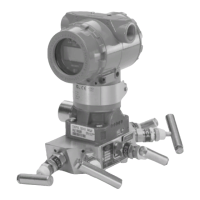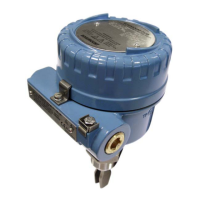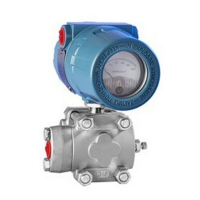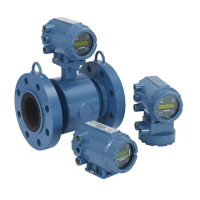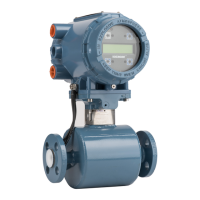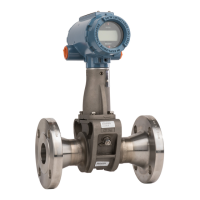80
Reference Manual
00809-0100-4809, Rev DA
Section 4: Operation and Maintenance
September 2015
Operation and Maintenance
4.4 Gas entrapment
In certain liquid applications (i.e. – buried water lines) it may be necessary to mount the
transmitter and Annubar sensor above the pipe. This can lead to gas entrapment in the impulse
piping which causes erratic flow readings.
One way to combat this problem is to install Automatic Vent Packages (AVP) on the impulse
lines. The vents will purge the gas periodically and keep the impulse lines clear. The key to the
installation is installing the vents and impulse piping so that any gas travels up to the vents and
away from the transmitter. Vents can usually be installed at any time. Contact your Emerson
Process Management representative for more details.
4.5 Dirt accumulation
One inherent advantage of an Annubar primary element over devices such as orifice plates is the
ability to function in flows carrying dirt and grease. However, under extreme cases, some of the
sensing ports are completely obstructed or the outside shape is drastically changed by buildup.
There are two methods of cleaning the Annubar primary element to restore performance.
Mechanical cleaning is the more certain method, but does require removal of the Annubar
primary element. Purging is effective if the accumulation covers the sensing ports or blocks
internal passages.
In applications where a large amount of foreign material exists, it may be necessary to perform a
routine preventative maintenance by removing the Annubar primary element for cleaning. The
outer surfaces should be cleaned with a soft wire brush. The internal passages should be cleaned
with compressed air. If necessary, a solvent for dissolving foreign material may be appropriate.
Purging with an external fluid source under a higher pressure is an effective means of retaining
clear pressure pathways in the Annubar primary element.
The following precautions should be taken:
1. The purging fluid must be compatible with the process fluid and shouldn't cause other
problems such as contamination.
2. The purging fluid should be preheated or pre-cooled if the temperature difference of
the fluid and the process exceeds 150 °F (66 °C).
3. The differential pressure transmitter or meter should be isolated from the purge fluid to
prevent over-ranging.
4. Continuous purging is not recommended.
The length of time between purges, or the cycle time, as well as the length and volume of the
purge cycle must be determined experimentally. Some guidelines established as a starting
point for experimentation are as follows:
1. Supply pressure of at least 60 PSIG (415 kPa-g) and not exceeding 115 PSIG (795 kPa).
2. Purge air flow rate of at least 40 SCFM (68 Nm
3
/h) when flowing at 60 PSIG (415 kPa).
3. Purge duration of at least 60 seconds.

